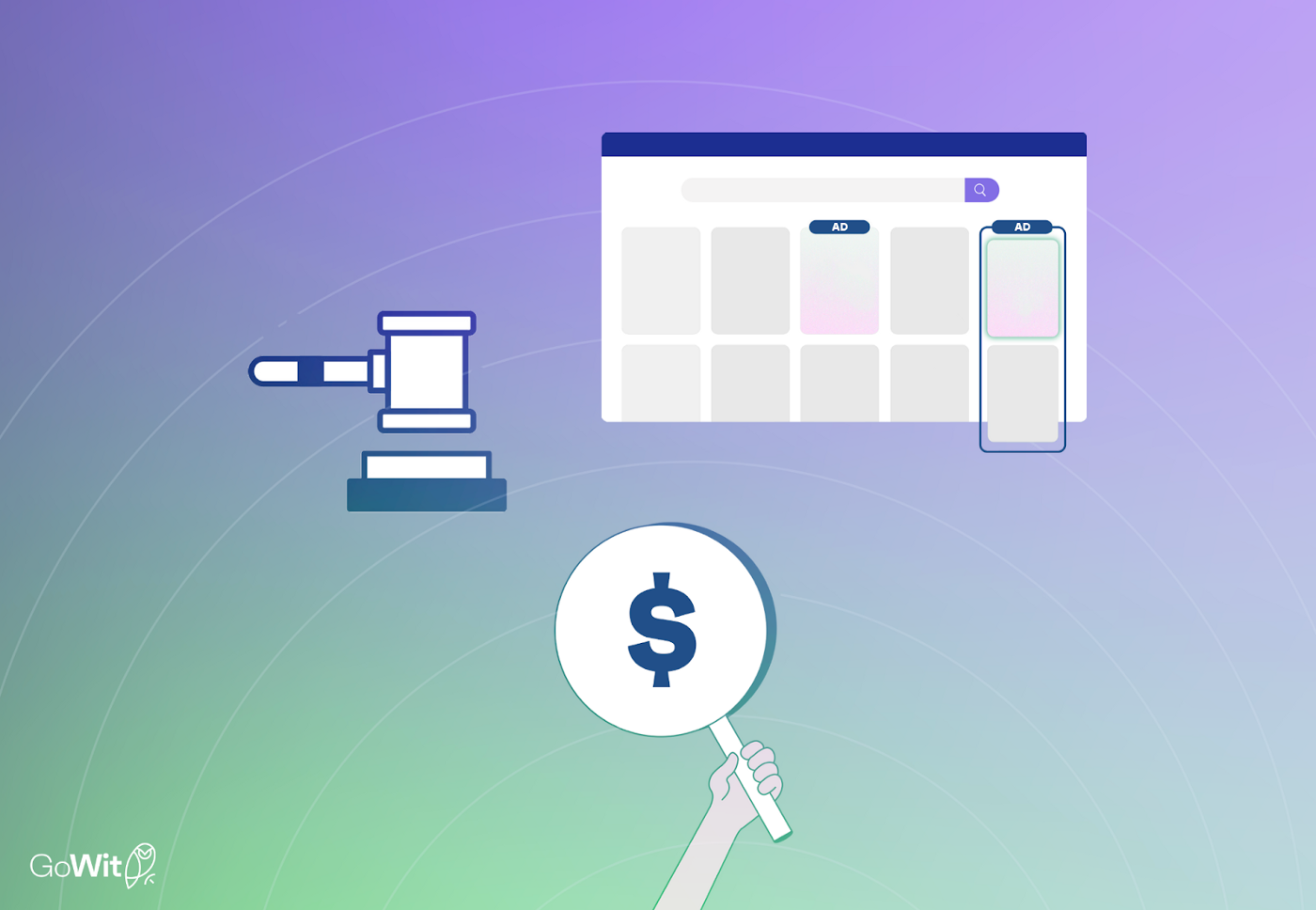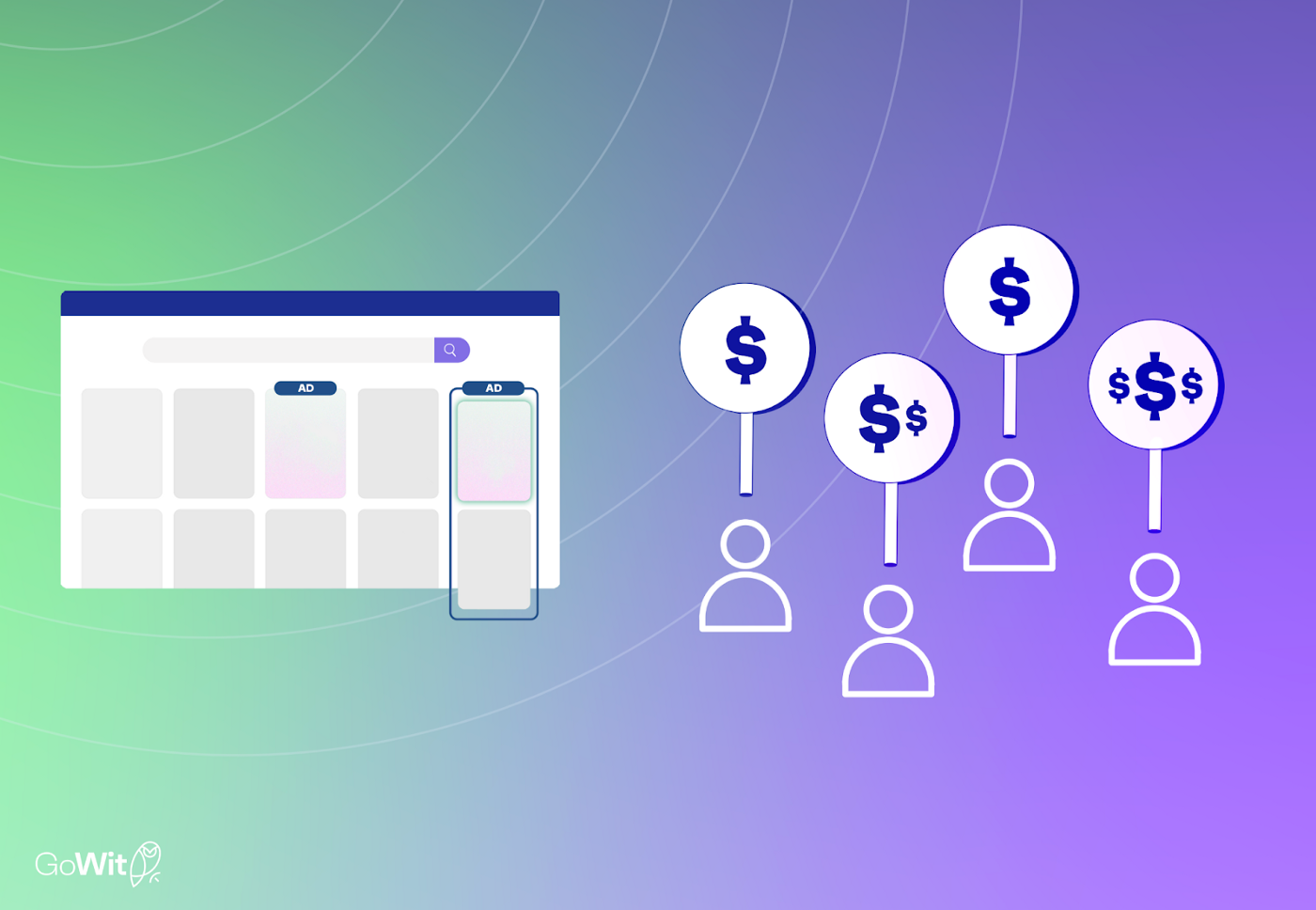Ad Auctions and Bidding Explained
Retail Media
.
6 min read
For all types of marketplaces and online sellers, an advertising partner that will help succeed with the CPC campaigns and proper keyword selections to maximize income seems to be quite life saving now.

It is difficult for a seller to always consider new tactics to increase traffic and product purchases when exposed to different terms like ad auctions and CPC bidding. Fully comprehending these terms and applying in a successful way is another challenge, we all know more or less about auctions and bids, but when it comes to online advertising, it’s important to grasp how advertisers go through a process to get their ad spaces. There may be different types of auctions and bidding, and the locations of advertising spaces may vary, but there is an explanation for each of them. So today’s article aims to break down what ad auction is, its different types, bidding strategies, and how it can benefit your business.
What is Ad Auction?
An advertisement goes through the process of ad auction each time it is qualified to show up for a search. The procedure of an ad auction determines which ads will appear for a certain product search and in what order they will appear on the page. And the outcome of the auction that basically decides where it appears on the page is of great importance. Because it has been stated that, for 90% of the cases, users click on the top-of-search ads and they only reach the other ones in 10% of the cases.
In advertising, online auctions are very similar to those held offline where you place a bid on a specific item, just like in an auction for an antique furniture. The main distinction is that you are bidding against other advertisers for the desired ad space, as opposed to bidding for a specific piece of furniture.
While the advertisers who get their advertising spaces with high bids have the opportunity to increase impression and sales, the publishers who give those advertisement spaces also get an active source of income.
What are the different types of auctions?
First-price auctions

In first-price auctions, the advertisers pay exactly what they bid on. When three advertisers submit bids of $4.00, $4.50, and $5.00, the highest rate wins, in this case, $5.00 is the winning price. Thus, the advertiser must pay $5.00.
Second-price auctions

In second-price auctions, the winning bidder pays $0.01 more than the second-highest bidder. If the first advertiser bids $3.20, second bids $3.80, and third bids $3.40, the second one would win and pay $3.41. In general, second-price auctions are frequently used by publishers because they are more advantageous to advertisers.
How does bidding work?
As mentioned earlier in this article, an auction is a method of selling products and services by putting them up for bids and a bid is the highest amount of money you are willing to spend for an item. Bidders are in a constant competition with others to win the auctions. In the case of Sponsored Ads, advertisers are the bidders and the item that’s up for the auction is the ad to be displayed to shoppers.
A real-time auction determines which advertising will appear for relevant shopping searches and in what order they will be displayed on the website when a customer shops for a product. A mix of the advertiser’s bid and the ad’s relevancy to the shopping query determines how the ads competing in this auction are ordered and presented to shoppers. A customer seeing your advertisement after it has been displayed is referred to as an impression. However, you only pay when a customer clicks on your advertisement; this is known as pay per click or cost per click. So, that means you do not pay for ad impressions.
It is advantageous to have an advertising platform that offers suggested bids and bid ranges to assist in making wise judgments.
Other advertisers can enter bids for ad placement on websites and popular keywords, each brand’s optimum CPC is determined by the ranking of its advertisement as well as the ranking of other comparable brands and products. The demand for a keyword in the auction and the location of the ad affect the cost of advertising.
If you want to get as many clicks as you can to draw leads to your products, you must decide which CPC would optimize your budget.

Join to get free updates every week
CPC (Cost-per-click) advertising
The price advertisers pay for a single click in advertising is known as cost per click, or CPC. It’s a crucial indicator to use when evaluating your ad spending plan. CPC (cost-per-click) works through a bidding system. Sellers select various keywords that are relevant to their items and place bids on them. Then, online marketplaces display items relevant to the customer’s searched keywords when they are trying to buy something. So, the item with the highest bid receives the top spot for its advertisement in the search results.
The aim of advertisers should be to lower costs while still fostering high-quality clicks, which will lead to happy customers.
How to lower your CPC?
Lowering your CPC begins with selecting the right keywords that will provide high-quality leads. That’s why being able to do relevant keyword research for the product listings is a must now for all advertisers. And, you should always optimize the product listings if you want to generate quality leads. Another point is that it’s important to analyze your advertising campaigns to see whether or not they are effective. In the end, spending all of your money on a campaign that isn’t giving the best outcomes would be a mistake. For this reason, it is always necessary to have the opportunity to obtain the report and monitor the performance of the advertising campaign within the advertising platform you have in order to track important metrics, such as click-through rate and conversions.
For any advertiser, the goal is maximizing the profit here. However, if you don’t have a professional team managing your keyword selections and the bidding process for ad placement, or if you haven’t spent years developing your ad tactics, these processes can become stressful. For all types of marketplaces and online sellers, an advertising partner that will help succeed with the CPC campaigns and proper keyword selections to maximize income seems to be quite life saving now.
If you’re interested in hearing worldwide trends on digital advertising and latest e-commerce statistics, make sure to follow us on Twitter.
References:
“Ad Bidding Strategies Every Seller Should Know.” Ppcentourage.com, ppcentourage.com/blog/amazon-ad-bidding-strategies/. Accessed 10 Oct. 2022.
Amazon Bidding 2022. 28 Dec. 2021, profitwhales.com/archives/articles/amazon-bidding. Accessed 10 Oct. 2022.
N, Arishekar. “Amazon Bid: The Ultimate Guide to Bidding Strategies.” SellerApp, 3 Feb. 2022, www.sellerapp.com/blog/amazon-bidding-strategies/. Accessed 10 Oct. 2022.
ronen. “What Is CPC or Cost-Per-Click |.” RevenueWize, 9 Apr. 2020, www.revenuewize.com/amazon-academy/advertising-measurement-terms/amazon-cost-per-click-cpc/. Accessed 10 Oct. 2022.
Zawadziński, Maciej. “How Do First- and Second-Price Auctions Work in Online Ads? — Clearcode Blog.” Clearcode | Custom AdTech and MarTech Development, 14 Nov. 2017, clearcode.cc/blog/first-price-second-price-auction/. Accessed 10 Oct. 2022.
Share
